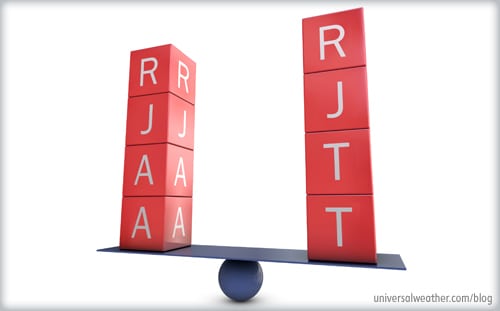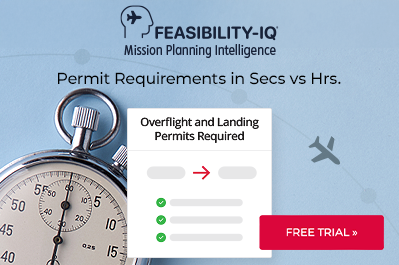Which Airport to Pick in Tokyo for Bizav Flights: Overview of Options, Requirements and Costs (Part 1 of 2)


This aviation blog post is the first part of a series on selecting airports in Tokyo for business aviation flights.
With the new general aviation terminal (GAT) opening in Narita, Japan (RJAA) on March 31, 2012, choices in Tokyo have never been better for business aviation operators. Airport slots are easier to obtain than just a few years ago and recent extension of operating hours at Haneda, Japan (RJTT) has improved access to Tokyo. While many operators prefer to take advantage of close-to-downtown RJTT there are considerations in terms of operating flexibility.
1. Airport options in Tokyo
Narita (RJAA) and Haneda (RJTT) are available for general aviation (GA), but both are primarily focused on scheduled commercial activity. RJAA is a 1 – 1.5 hour drive (65 km / 40 mi) to central Tokyo (depending on traffic and destination) while closer-in RJTT is typically a 15-40 minute drive (20 km / 12.5 mi). Helicopter service can be arranged from RJAA to many locations around Tokyo, but only one helicopter is available currently to downtown Tokyo with seating capacity for six (without baggage) or four with baggage. The cost for this helicopter service is approximately $3,000 USD each way. There’s no helicopter service between RJTT and central Tokyo.
2. Airport curfews and restrictions
RJTT is available 24 hours while RJAA is closed 1400-2059 UTC. Stage 2 aircraft are banned from all Japanese airports. RJTT peak commercial hours are 2200-0130, 0700-1159 and 1400-1459 UTC while RJAA peak times are 2330-0300 UTC. Airport slots for GA movements may be obtained during peak hours on a case-by-case basis.
05/16/13: Updated by author
3. Prior permission required (PPR) and airport slot requirements
Airport slots are required at all airports in Japan, but PPRs aren’t needed at either airport. One-week advance notice is usually sufficient for airport slots at either RJAA or RJTT, however, you’re less likely to get a requested time of day at RJTT as airport slot availability is limited. RJAA does not have set limitation on airport slots, but only eight airport slots per day (maximum of four of these may be used for arrivals) are available for GA at RJTT. Landing permits are not required for private (non-revenue) flights or tech stops (so long as no passengers embark or disembark). Charter (non-schedule commercial) operations require landing permits (known in Japan as operation permits), and these take three business days to process for business trips, assuming all documentation is provided and correct. If it’s a tourism trip, Japan Civil Aviation requires 10 business days. U.S.-registered operators must also submit a Letter of Consistency from the U.S. Department of Transport when requesting a landing permit.
4. Aircraft parking restrictions
GA parking is available at RJAA for up to 30 days in a business aircraft parking area (18 parking stands available). Maximum parking duration at RJTT is seven days with 13 parking stands available. If you’re operating an aircraft larger than a BBJ, you’ll be parked in a commercial aircraft area near the business aircraft parking area. If you need to stay longer than seven days at RJTT or 30 days at RJAA, it’s necessary to reposition to another airport and then return to RJAA or RJTT. This involves new airport slots, but a charter (non-scheduled commercial) permit revision is not required as the reposition is considered a ‘ferry flight.’ If airport authorities require the aircraft to be moved, the crew will be notified. Your ground handler can supervise movement of the aircraft, which means that the crew doesn’t have to be present. Be aware that you’ll need a towbar at RJTT. While ground handlers stock common towbar types at RJAA always, confirm towbar availability in advance.
5. Upgrades to airport infrastructure may cause delays during 2012
Ministry of Transport is planning improvements to airport tarmac, taxiways, and runways at RJTT during 2012, and this may cause temporary closures (as announced via notices to airmen [NOTAM]). Infrastructure condition is good at RJAA with no upgrading scheduled during 2012.
6. Service limitations
Aircraft hangar space is not normally available at either Tokyo airport. During severe weather conditions such as typhoons, limited hangar accommodation may be secured but at a high price. Expect to pay about $4,000 USD per three hours for hangar use at RJTT or RJAA. Follow-me cars are provided for commercial and business aircraft at RJAA but only available for commercial aircraft at RJTT.
7. Advantages and costs of using the new business aviation terminal at RJAA
With the opening of the new general aviation terminal (GAT) at RJAA, customs clearance process will be quicker (saving an estimated 30 minutes, or more). Other advantages of using the GAT include an even higher level of security with enhanced privacy (you’re completely separate from commercial travelers, and media representatives are not permitted in this area). Cost to use the new 24-hour GAT is 250,000 Yen (about $3,000 USD) per arrival and departure. There’s no limit to the number of passengers and crew that may clear, but the same fee applies even if there are no passengers onboard. GAT use is not mandatory, and there’s no fee to clear in the main terminal. GAT cost includes use of lounges, Internet, and access to refreshments. Pre-paid ground transportation and taxis must be pre-cleared by security to pick up passengers/crew at GAT. This can be arranged through your ground handler.
Questions?
If you have any questions about this article, contact me at hiroshihigashiyama@universalaviation.aero.
Later, we’ll compare clearing customs and arranging ground services at these two airports.




